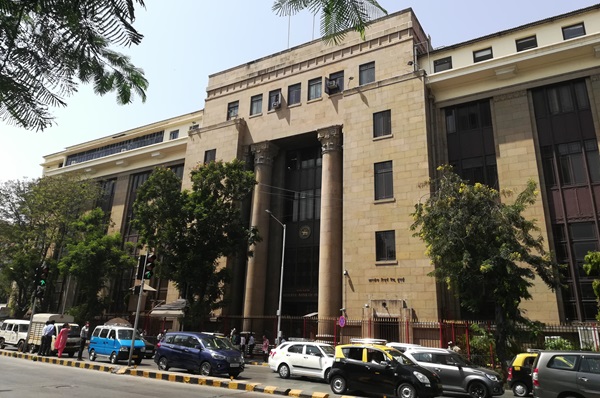.png)
Rate Cuts, Trade Shocks, and the Limits of Monetary Signalling
When monetary easing is not matched by credit traction, further rate cuts risk becoming ineffective. In a volatile global and domestic setting, the RBI must safeguard its credibility by acting only where it believes the real economy is ready to respond.


Dr. Srinath Sridharan is a Corporate Advisor & Independent Director on Corporate Boards. He is the author of ‘Family and Dhanda’.
August 5, 2025 at 7:21 AM IST
In the fragile global economy that followed the pandemic, monetary policy has come to bear a heavier burden than ever before. It is no longer expected to simply balance inflation and growth. It is also expected to communicate intent, reassure markets, and reflect alignment with national development priorities. In India, these expectations have created a narrow space for the Reserve Bank of India’s Monetary Policy Committee, where every decision carries weight far beyond the numbers it announces.
The MPC’s recent series of rate cuts have been described as bold. They were front-loaded, and, to some, necessary to give growth an additional push. Headline inflation has largely remained within the target range over the past year, which gave the RBI some room to act. But the current economic context is layered with new uncertainties, and this makes the decision-making terrain far more delicate than in past cycles.
One of the most significant shifts in the global backdrop is the renewed emergence of protectionist sentiment. In particular, the tariff-driven rhetoric from the United States, led by the familiar #TruthSocial voice of President Donald Trump cannot be dismissed as political enactment. These signals carry real consequences.
For an economy like India’s, which has sought greater integration into global supply chains, any disruption of trade flows affects both exporters and price stability. Such shocks can reduce export competitiveness, disturb commodity dynamics, and raise costs for producers across sectors. What begins as a trade action overseas quickly becomes a pricing and planning dilemma at home. The inflationary impact may not show up immediately, but the uncertainty it introduces changes how firms and households behave. It influences risk appetite, inventory strategies, and investment timelines. This blurring of borders between external and internal pressures demands a more cautious lens.
Within this complex frame, one key question stands out. Do rate cuts still work the way they are expected to? And more precisely, is the real economy in a position to respond to easier monetary conditions with higher investment, production, and hiring?
The data on credit offtake suggests that the link between lower rates and real economy traction may be weakening. In recent quarters, bank credit to industry has grown slowly, indicating either limited demand or persistent caution on both sides of the transaction. As of June, the credit growth to industry stood at just 5.5%. This reflects deeper hesitation. Borrowers may still view credit as expensive or uncertain, while lenders may remain selective in their deployment. Even as the banking system holds adequate liquidity, it is not flowing easily into new enterprise or industrial expansion. The credit-deposit ratio, now at 78.9%, is slightly lower than it was a year ago. This signals that funds are available but are not being converted into meaningful credit creation.
This is not merely a short-term fluctuation. One of the interpretations could be that there appears to be a broader disconnect between monetary signalling and economic response. Businesses today are facing a more complex decision-making environment than in past cycles. Geopolitical volatility, ease of doing business, confidence in the markets they serve, regulatory transitions, and demand unpredictability have all contributed to a more cautious mindset. In such a setting, the willingness to take on new debt or to commit to fresh capital formation is not shaped by interest rates alone.
In fact, much of India’s recent capital formation has been led by the public sector. Government infrastructure spending has provided a visible push, but private sector investment has remained tentative. Without private participation, the broader credit engine cannot gain momentum. This is especially true when export-facing firms, particularly in manufacturing, are rethinking their plans in light of tariff risks and shifting global demand.
There is also a broader institutional risk that comes into view. Over time, the expectation of rate cuts has become part of the overall discourse. Industry representatives, lobby groups, and even some policy voices have come to see rate cuts as the go-to response for any slowdown, irrespective of its underlying cause. While this expectation is understandable, it risks drawing the central bank into a space where its decisions are measured more by sentiment than by substance. The MPC was designed to be independent and guided by data, not demand. That institutional architecture must be preserved, especially when macroeconomic stability is not yet guaranteed.
Adding another layer of complexity are the emerging inflation dynamics shaped by food and climate volatility. Irregular weather, rising global food prices, and local supply disruptions have introduced new volatility into the inflation basket. This kind of inflation is harder to control through interest rate tools. In fact, easing rates under such conditions can create second-order effects. When food prices rise, input costs increase, and wage demands often follow. If policy continues to ease while this plays out, inflation expectations may become unanchored.
Financial markets, especially bond markets, are already sending signals of caution. This reflects investor unease with the inflation trajectory and the fiscal borrowing outlook. Markets tend to price in uncertainty well before it appears in macroeconomic data. If the MPC’s decisions do not align with these forward-looking assessments, it may inadvertently push up the cost of capital and weaken fiscal space.
What remains most essential through all of this is the enduring credibility of India’s inflation-targeting framework. That credibility rests not only on achieving inflation benchmarks but on the central bank’s ability to maintain coherence between communication, action, and expectations. When policy decisions align visibly with evolving macroeconomic signals, they reinforce confidence in the RBI’s stewardship of the economic cycle. Over time, this trust becomes a strategic asset, quietly anchoring both investor sentiment and household stability. The long arc of monetary stability is shaped as much by consistent judgement as by calibrated precision.
To its credit, the Reserve Bank of India has largely upheld this credibility. Its Monetary Policy Committee, in particular, has shown a commendable degree of independence, both in tone and in action. Amid shifting pressures, it has remained vocal, measured, and firm in its pursuit of price stability. This institutional autonomy is not just a safeguard, it is a signal of India’s economic maturity. Preserving it is essential to sustaining both macroeconomic resilience and public trust.
Monetary policy must retain its role as a stabilising force, not just a comfort signal. At this point, the MPC must ask a clear and grounded question. Are the conditions right for a further rate cut to produce real economic impact?



